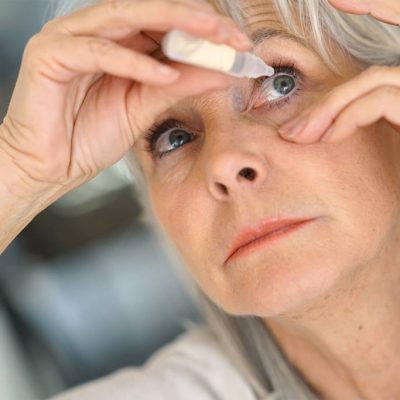A beard transplant involves taking hair from one part of the body and transplanting it to your jawline or other areas where you want your beard to grow.
While it may sound straightforward, the process is quite involved. There are two primary methods a surgeon can use:
- Follicular Unit Extraction (FUE): This technique involves harvesting individual follicular units one at a time from the donor area. FUE tends to be less painful, which may be why it is more commonly performed.
- Follicular Unit Transplantation (FUT): In this method, a surgeon removes a small strip of tissue from the back of the head and extracts hair follicles from this strip.
A follicular unit is a small cluster of hair follicles that typically emerge through a single exit point in the skin.
Both methods involve taking between 2,000 to 5,000 hair follicle grafts, or more, from the donor area, usually located at the back of the head, near or slightly below the level of the ears, and transplanting them onto the face. A graft refers to a single hair follicle that is transplanted.
What’s the procedure like ?
Here’s an overview of the steps involved in the procedure:
Harvesting
Regardless of whether you opt for FUE or FUT, the first step your surgeon will take is to shave the area on your head where the hair will be harvested. This provides a clearer view of the hair follicles. Before the harvesting process starts, you will be administered a local anesthetic, ensuring you won’t feel any discomfort during the harvesting or implantation.
Implantation
After the follicles have been harvested from your head, the surgeon will inject a local anesthetic into the areas of your face where the implants will be placed. Then, each follicle will be carefully implanted into your facial skin, creating the beard shape you and the surgeon planned before the procedure.
Recovery
You’ll need about a day to recover from the beard implant surgery. Tiny crusts may form around each newly implanted hair follicle, but these should shed within a few days.
After approximately one to two weeks, you can begin shaving and trimming your new beard as usual.
It’s important to note that your new beard hairs might fall out after 2 or 3 weeks, which is a normal part of the process. New hair should start to grow in to replace them.

Who’s a good candidate for this procedure?
Since hair follicles are taken from the back of your head, it’s crucial to have healthy hair follicles in that area. This part of the scalp usually remains the last to experience baldness, so even if you’re starting to lose hair on the top, you likely still have healthy growth at the back.
Your transplant surgeon will assess your scalp to determine if there are enough viable follicular units for the transplant. If there aren’t enough healthy follicles available, your doctor might suggest alternative treatments.
How do you know that a beard implant is successful?
Regardless of the procedure used, the transplanted hair follicles should start settling in and growing within 3 to 4 months. You’ll know the beard implant was successful if, after 8 to 9 months, you have a full, healthy beard that looks natural and can be treated as if it has always been there.
Both FUE and FUT can result in a natural-looking beard, but FUT tends to produce a fuller appearance. This is because more follicles are typically harvested when a strip of skin is removed. If a thicker beard is your goal, you might want to consider FUT.
Beard transplant failures are rare and generally occur due to improper harvesting from the donor area. Therefore, it’s important to invest in an experienced hair restoration surgeon to ensure the best results.
Are There Any Precautions Or Side Effects ?
After the surgery, both the harvested area on your head and the implanted area on your face will require special care. It’s important to keep both sites clean.
In the first few days you should avoid these activities: swimming, exposure to direct sunlight, smoking, using a sauna or hot tub, strenuous physical activity, especially anything that’ll cause a sweat, touching, rubbing, or scratching the harvested or implant areas.
Potential Side Effects
You may experience these side effects:
- swelling
- redness
- tightness
- numbness
- temporary scabs or crustiness
The implant areas on your face should not have permanent scarring, but you might experience some temporary scabbing. If crustiness, redness, swelling, or irritation persists beyond a couple of weeks, be sure to inform your doctor.
How Much Does A Beard Implant Cost ?
Beard transplants can be quite expensive, often costing upwards of $15,000 depending on the number of grafts required. Partial transplants, which fill in areas where facial hair is sparse, typically range from $3,000 to $7,000, again depending on the number of grafts. It’s important to discuss the costs with your doctor during your initial consultation.
Before the procedure, your doctor will need to evaluate your scalp and face to determine if you’re a suitable candidate. There may be a fee for this consultation, so be sure to inquire about the cost when scheduling your appointment.
Since beard transplants are considered cosmetic procedures, they are generally not covered by insurance. Some doctors offer payment plans, so ask about financing options if needed.
Conclusion
Beard implant surgery is a method to fill in gaps in your beard or to create a beard where none previously existed. Although it’s an invasive and costly procedure, the results are typically long-lasting.
Depending on the type of surgery, you might end up with a single long scar on the back of your head, which can be covered by hair growth, or numerous small scars that are often too tiny to notice.
If you prefer not to pursue implant surgery, you could consider topical products like minoxidil to enhance beard growth or try taking supplements.
Regardless of your choice, it’s important to consult with your doctor about the risks and benefits of surgery, topical treatments, and supplements.
While genetics might influence limited beard growth, there are various options available if you’re aiming for facial hair in the future.


